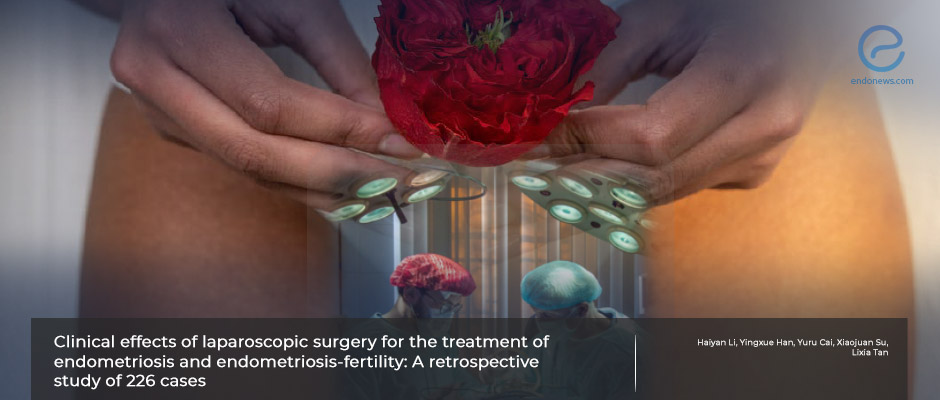Comparison of two surgical approaches for endometriosis.
Mar 17, 2023
Two surgical methods were compared for the postoperative outcomes and fertility rates
Key Points
Importance:
- The role of laparoscopy in improving fertility rates in women with endometriosis is superior to laparotomy.
Highlights:
- The laparoscopic approach significantly reduced postoperative pain and improved the quality of life while treating endometriosis when compared to laparotomy.
What's done here:
- This retrospective study is about 226 women with endometriosis who underwent surgical treatment in a tertiary hospital in China.
- The laparoscopic surgery group included 176 women, while 50 had a laparotomy to manage their endometriosis.
- All the patients followed postoperatively for one year to compare postoperative outcomes and fertility rates statistically.
Key Results:
- The distribution of the patients based on rAFS staging (I, II, III, and IV) was 91, 58, 53, and 24, respectively.
- Intraoperative blood loss and hospital stay after the surgery were statistically longer in the laparotomy group.
- The incidence of postoperative complications and symptom rates were lower in the laparoscopy group.
- After one year of follow-up, postoperative pregnancy rates were higher in the laparoscopy group, even if they had previously been diagnosed with infertility.
Strengths and limitations:
- Half of the women population in this study group was nulliparous, while almost the other half had one or more children, making the aggregate statistics on fertility rates controversial.
- The nature of the study is retrospective, the patients were not randomized.
- In addition, no statistical work was done concerning the effect of the endometriosis stages on postsurgical outcomes.
Lay Summary
Endometriosis is one of the causes of infertility in women. But the pathophysiology of infertility caused by endometriosis is not yet clear. Hormonal disorders, abnormal peritoneal function, distorted pelvic anatomy, and multiple cesarean deliveries are among the accused.
Dr. Li et al. from the Shijiazhuang People's Hospital, China conducted this study to investigate the effect of two different surgical methods on the subsequent fertility of women with endometriosis. The retrospective study included 226 women with endometriosis who were operated on and postoperatively followed up for one year. The authors also statistically evaluated the postoperative outcomes of these two operation methods.
Based on the statistical analyses, the results indicated laparoscopic approach is superior to laparotomy in terms of the length of the operation, operational complications, postoperative outcomes, and fertility rates.
This article was recently published in the journal named Frontiers in Surgery.
Research Source: https://pubmed.ncbi.nlm.nih.gov/36726953/
laparoscopy laparatomy infertility dysmenorrhea dyschezia dyspareunia dysuria postoperative outcomes endometriosis.

